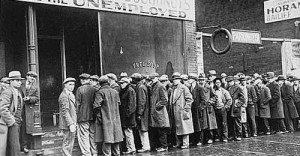 Regime uncertainty has gained increasing recognition as the current economic troubles have persisted with little or no improvement since the economy reached a cyclical trough early in 2009. As described in my 1997 paper, regime uncertainty pertains to
Regime uncertainty has gained increasing recognition as the current economic troubles have persisted with little or no improvement since the economy reached a cyclical trough early in 2009. As described in my 1997 paper, regime uncertainty pertains to
“the likelihood that investors� private property rights in their capital and the income it yields will be attenuated further by government action. Such attenuations can arise from many sources, ranging from simple tax-rate increases, to the imposition of new kinds of taxes, to outright confiscation of private property. Many intermediate threats can arise from various sorts of regulation, for instance, of securities markets, labor markets, and product markets. In any event, the security of private property rights rests not so much on the letter of the law as on the character of the government that enforces, or threatens, presumptive rights.”
In the latter half of the 1930s, many investors feared that the government would destroy the private enterprise system and replace it with fascism, socialism, or some other extreme transformation of the existing economic order.
In testing my hypothesis, I marshaled three distinct types of evidence: historical documentation of government actions and public reactions; findings of public opinion surveys, especially surveys of businessmen; and evidence from financial markets. The latter seems to some observers, especially to economists, to be the most telling because it is relatively �hard� and quantitative. In any event, it is the sort of evidence economists are accustomed to analyzing.
My most striking financial evidence for the New Deal episode pertains to the yield curve for corporate bonds, that is, to the spreads between the effective yields on high-grade corporate bonds with various terms to maturity. I found that this yield curve became suddenly much steeper sometime between the first quarter of 1934 and the first quarter of 1935 (a period when the New Deal lurched from its first, or business tolerant, phase to its second, or business hostile, phase) and remained very steep until sometime between the first quarter of 1941 and the first quarter of 1942 (a period when the New Deal handed over the reins to the military and the big businessmen who, along with the president himself, ran the war-command economy for the duration). I interpreted these extreme spreads as risk premiums on longer-term investments caused by regime uncertainty.
. . . .
For the full article, please click here.